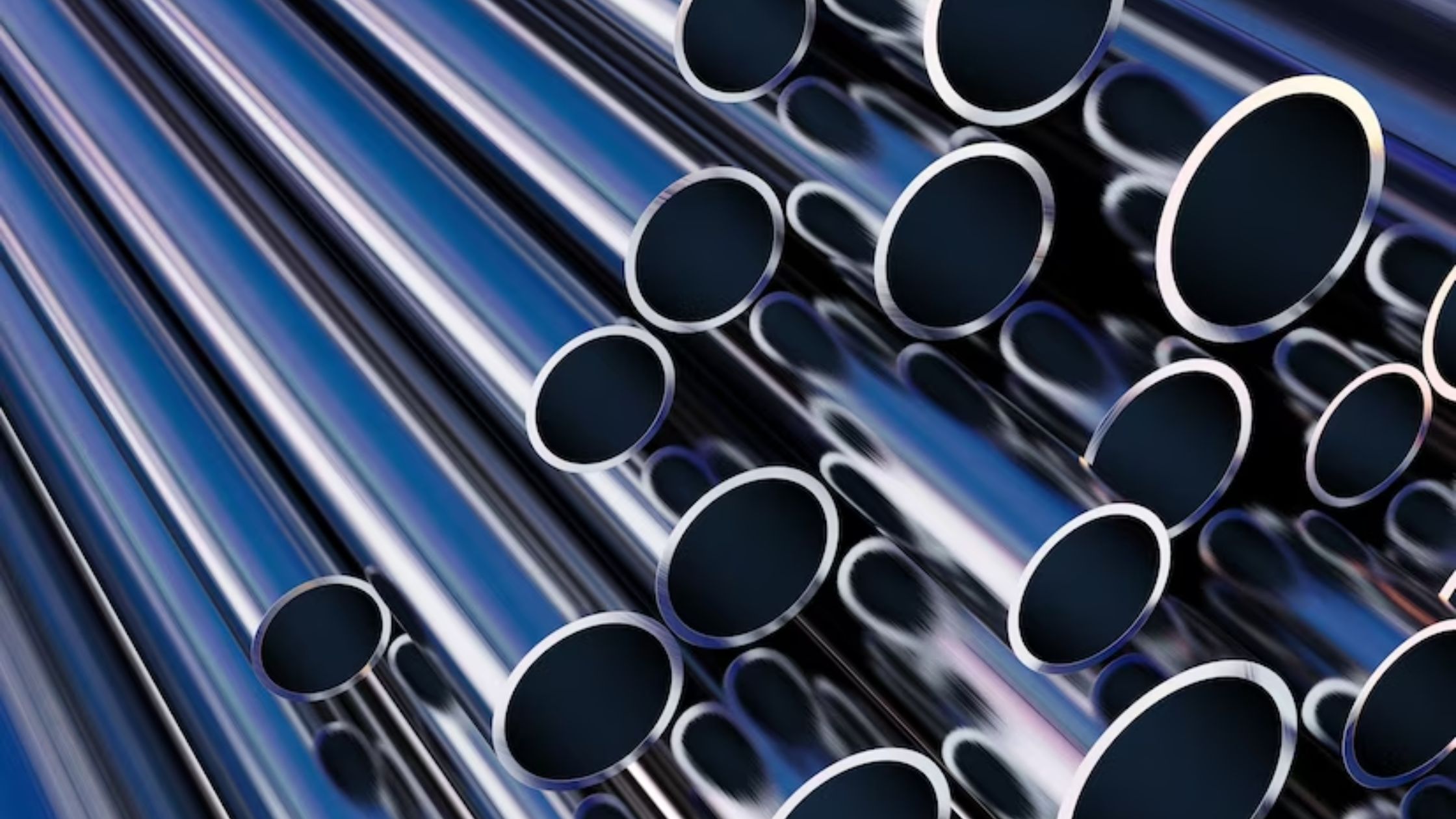Stainless steel pipes – the unsung heroes of countless industries in Singapore. Stainless steel, composed of iron, chromium, and various alloying elements, possesses remarkable properties that set it apart. Its unparalleled resistance to corrosion, rust, and discoloration is a direct consequence of its distinctive composition.
Furthermore, its inherent durability makes it a prime candidate for the fabrication of pipes with an extended lifespan. We will look deeply into the world of stainless steel pipe in Singapore in this extensive guide, providing information on everything from their composition to their production method.
Types of Stainless Steel Pipes
Stainless steel pipes come in two main varieties, each with its own characteristics and ideal applications.
Welded Stainless Steel Pipes
Manufacturing Process:
Welded stainless steel pipes are crafted through a meticulous process that starts with a flat strip of stainless steel. This strip is then shaped into a tubular form and the edges are welded together. There are several different ways to weld, including high-frequency induction welding and electric resistance welding. After welding, the seams are examined closely to make sure they remain intact.
Common Applications:
Welded stainless steel pipes find their utility in a wide range of applications. They are commonly used in plumbing systems, structural applications, and for transporting fluids and gases. Their versatility makes them a popular choice in industries like construction, automotive, and infrastructure.
Seamless Stainless Steel Pipes
Manufacturing Process:
Seamless stainless steel pipes are created from a solid cylindrical billet. The billet is heated and pierced to form a hollow shell, which is then elongated and reduced in diameter using various processes, including extrusion and rotary piercing. This results in a seamless pipe without any welding.
Benefits and Drawbacks:
Seamless stainless steel pipes boast a smoother interior surface, which can enhance fluid flow and reduce pressure loss. Their strength and homogeneity make them a popular choice for high-temperature and high-pressure applications. But compared to welded pipes, their manufacture might be more expensive and involved.
Differences Between Welded and Seamless Pipes
The primary distinction lies in the presence of a seam in welded pipes, while seamless pipes are, as the name suggests, free from seams. Seamless pipes tend to have higher corrosion resistance and are better suited for applications requiring high pressure and temperature resistance. Welded pipes are more cost-effective and are commonly used in less demanding applications. The choice between the two depends on specific project requirements and budget considerations.
Design Considerations
When crafting stainless steel pipes, meticulous attention must be given to design. Factors like size, wall thickness, and pressure rating are crucial determinants. Furthermore, considerations of corrosion resistance, temperature, and pressure must be accounted for to ensure optimal performance. Strict adherence to industry standards and codes ensures the pipes’ safety and reliability.
Manufacturing Process
Let’s now examine in more detail how stainless steel pipes are created. The first step in the process is choosing the appropriate raw materials, which are usually various grades of stainless steel according to the intended use. Next, the material undergoes forming and shaping processes, whether through rolling for welded pipes or extrusion for seamless ones. Heat treatment and annealing are employed to optimise the pipes’ mechanical properties.
Machining and finishing processes follow, ensuring that the pipes meet the required specifications. Quality control and inspection procedures are critical steps, ensuring that each pipe meets the highest standards before it leaves the factory. This rigorous manufacturing process guarantees that the pipes meet the demands of various industries.
Common Applications of Stainless Steel Pipes
Stainless steel pipes are the unsung heroes of many industries, quietly performing vital roles in various applications. Let’s dive into some of the most common uses for these remarkable pipes.
- Oil and Gas Industry
Stainless steel pipes are perfect for transporting oil, natural gas, and other hydrocarbons because of their corrosion resistance. Furthermore, their usage in offshore drilling rigs guarantees their longevity in challenging maritime conditions.
- Chemical and Petrochemical Industry
Chemical processing plants and petrochemical facilities rely heavily on stainless steel pipes. They resist the corrosive effects of chemicals, acids, and high temperatures, making them indispensable for conveying volatile substances safely.
- Food Processing and Pharmaceuticals
In the food and pharmaceutical industries, hygiene is paramount. Stainless steel pipes, with their smooth, non-reactive surfaces, are perfect for transporting edible liquids, pharmaceuticals, and even clean water in these highly regulated sectors.
- Construction and Infrastructure
Stainless steel pipes contribute to the stability and longevity of buildings and infrastructure projects. They are used in plumbing systems, structural components, and handrails, providing strength and resistance to environmental factors.
- Automotive and Transportation
Stainless steel pipes are found under the hood and throughout vehicles, ensuring efficient exhaust systems that resist corrosion. In the transportation sector, they help reduce emissions and enhance fuel efficiency.
Maintenance and Care
Now that we’ve explored the common applications of stainless steel pipes, it’s essential to understand how to maintain and care for them effectively.
Cleaning stainless steel pipes is relatively straightforward. Regularly wiping them down with a mild detergent and a soft cloth is often sufficient to remove dirt and grime. For tougher stains, use a mixture of vinegar and water.
Preventing corrosion is critical to prolonging the life of stainless steel pipes. Ensure proper insulation, especially in environments with temperature fluctuations. Avoid contact with corrosive substances whenever possible.
In case repairs are needed, it’s advisable to consult a professional. Minor issues can often be fixed by welding, but larger problems might require the replacement of the affected section. Regular inspections can help catch potential issues early.
Cost Considerations
When considering stainless steel pipes for your project, it’s essential to evaluate their cost-effectiveness.
While stainless steel pipes may have a higher initial cost compared to some alternatives, their long-term benefits often outweigh this expense. Their resistance to corrosion and longevity can result in lower maintenance and replacement costs over time.
Safety Considerations
Safety should always be a priority when working with stainless steel pipes.
Proper installation is crucial to prevent leaks and potential hazards. Follow industry regulations and guidelines closely to ensure a safe installation process. Additionally, provide adequate training to personnel handling stainless steel pipes.
Advancements in Stainless Steel Pipe Technology
As technology advances, stainless steel pipe manufacturing is not left behind. Here are some noteworthy advancements in this field:
Emerging materials and technologies are continuously enhancing the performance of stainless steel pipes. Some manufacturers are experimenting with new alloys and coatings to further improve corrosion resistance and durability.
The advent of Industry 4.0 has brought automation and data-driven processes to pipe manufacturing. This has led to increased precision, reduced waste, and enhanced quality control in the production of stainless steel pipes.
Conclusion
Stainless steel pipe in Singapore is a versatile and dependable component in various industries. They ensure the safe and efficient transportation of liquids and gases, contributing to the success of numerous applications. By understanding their common uses, proper maintenance, cost-effectiveness, and safety considerations, you can make informed decisions when incorporating stainless steel pipes into your projects. Stay updated on the latest advancements in the field to benefit from the ongoing improvements in stainless steel pipe technology.



